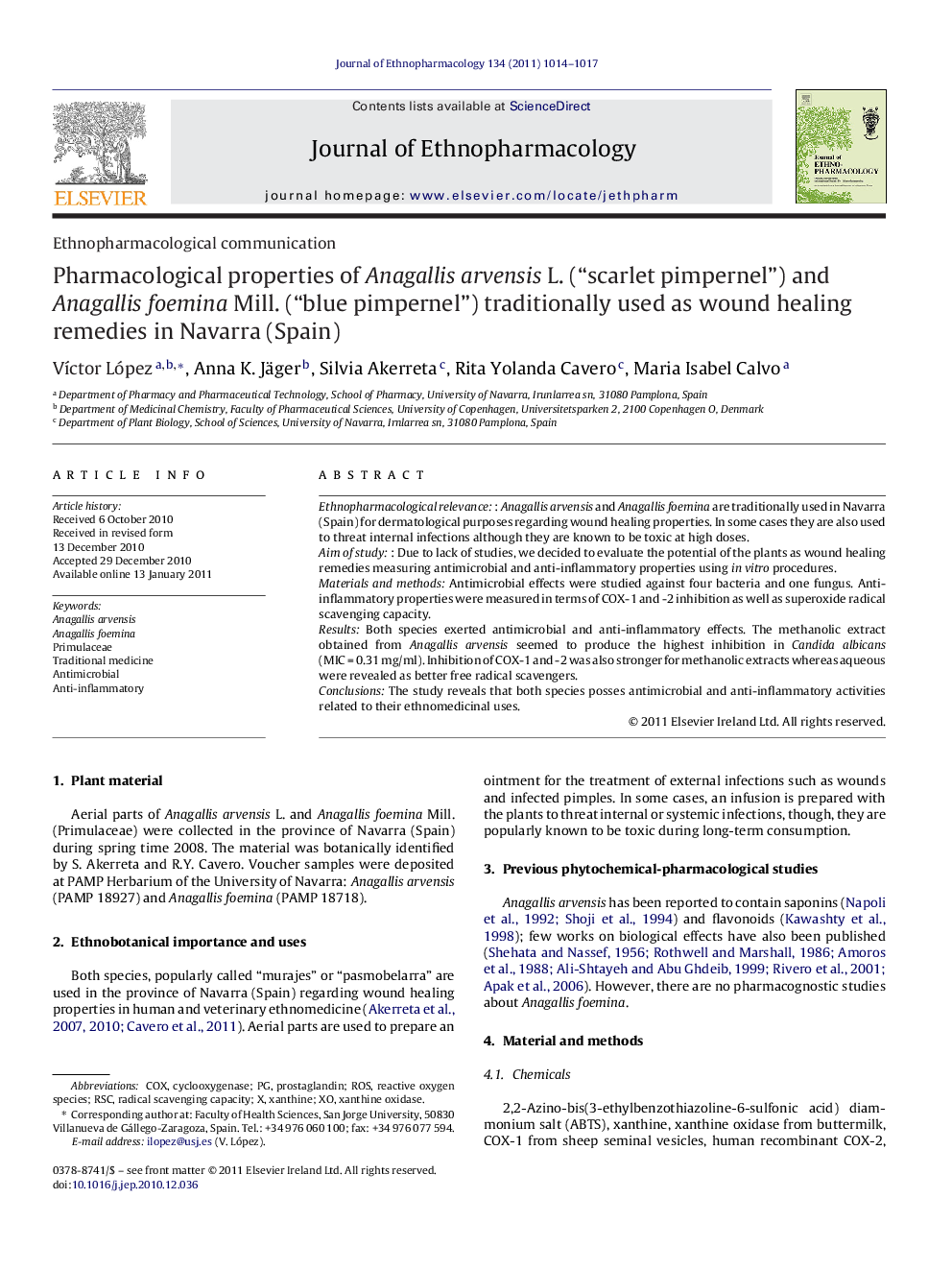| Article ID | Journal | Published Year | Pages | File Type |
|---|---|---|---|---|
| 5840375 | Journal of Ethnopharmacology | 2011 | 4 Pages |
Ethnopharmacological relevance: Anagallis arvensis and Anagallis foemina are traditionally used in Navarra (Spain) for dermatological purposes regarding wound healing properties. In some cases they are also used to threat internal infections although they are known to be toxic at high doses.Aim of study: Due to lack of studies, we decided to evaluate the potential of the plants as wound healing remedies measuring antimicrobial and anti-inflammatory properties using in vitro procedures.Materials and methodsAntimicrobial effects were studied against four bacteria and one fungus. Anti-inflammatory properties were measured in terms of COX-1 and -2 inhibition as well as superoxide radical scavenging capacity.ResultsBoth species exerted antimicrobial and anti-inflammatory effects. The methanolic extract obtained from Anagallis arvensis seemed to produce the highest inhibition in Candida albicans (MICÂ =Â 0.31Â mg/ml). Inhibition of COX-1 and -2 was also stronger for methanolic extracts whereas aqueous were revealed as better free radical scavengers.ConclusionsThe study reveals that both species posses antimicrobial and anti-inflammatory activities related to their ethnomedicinal uses.
